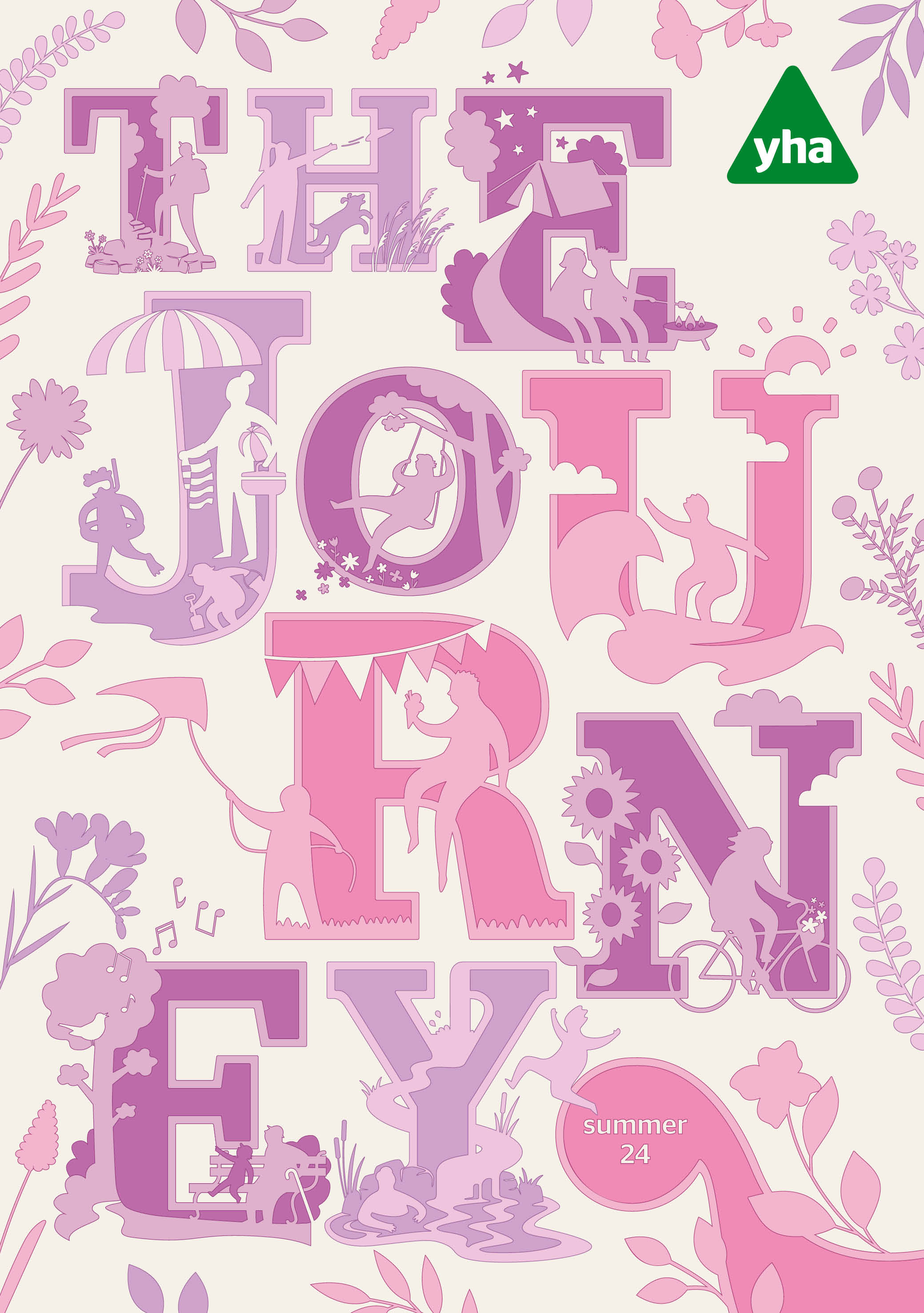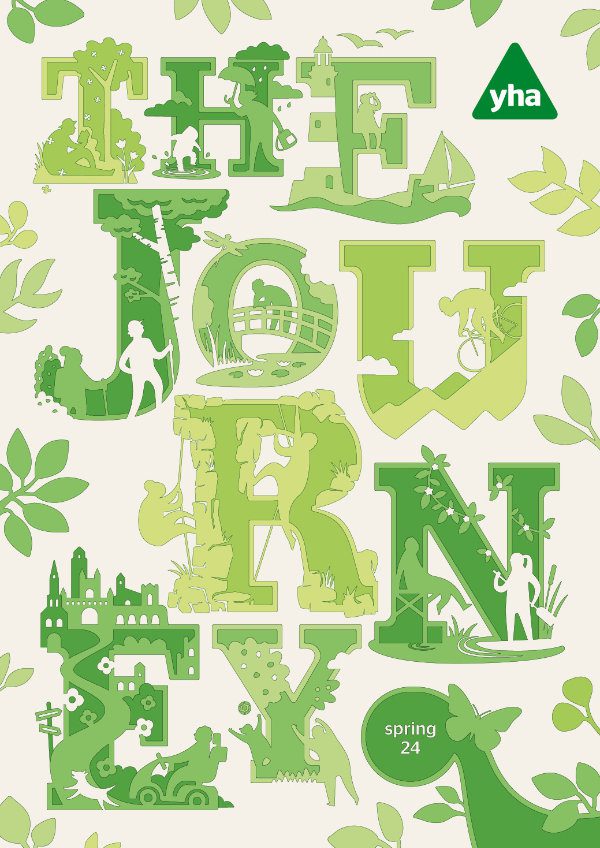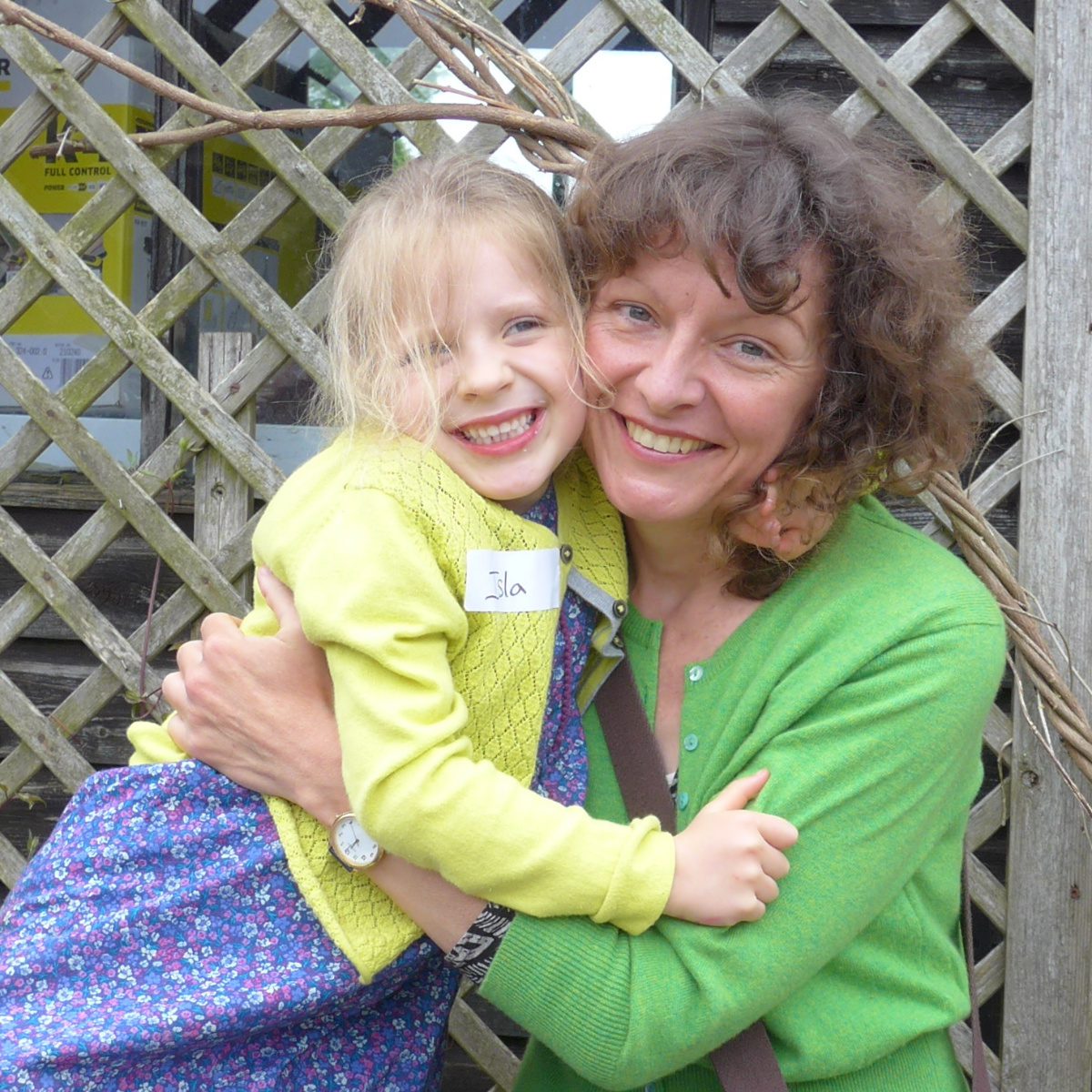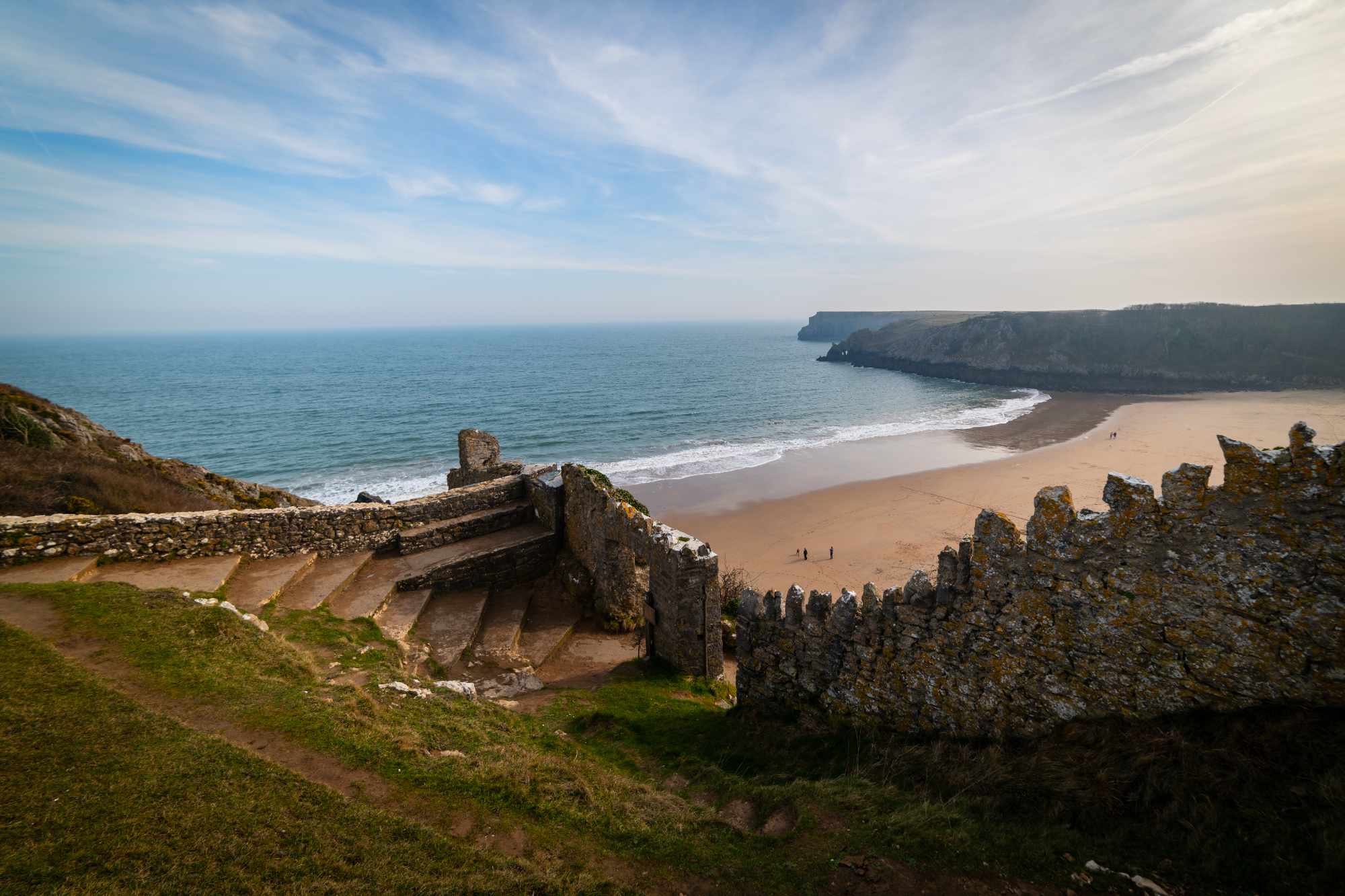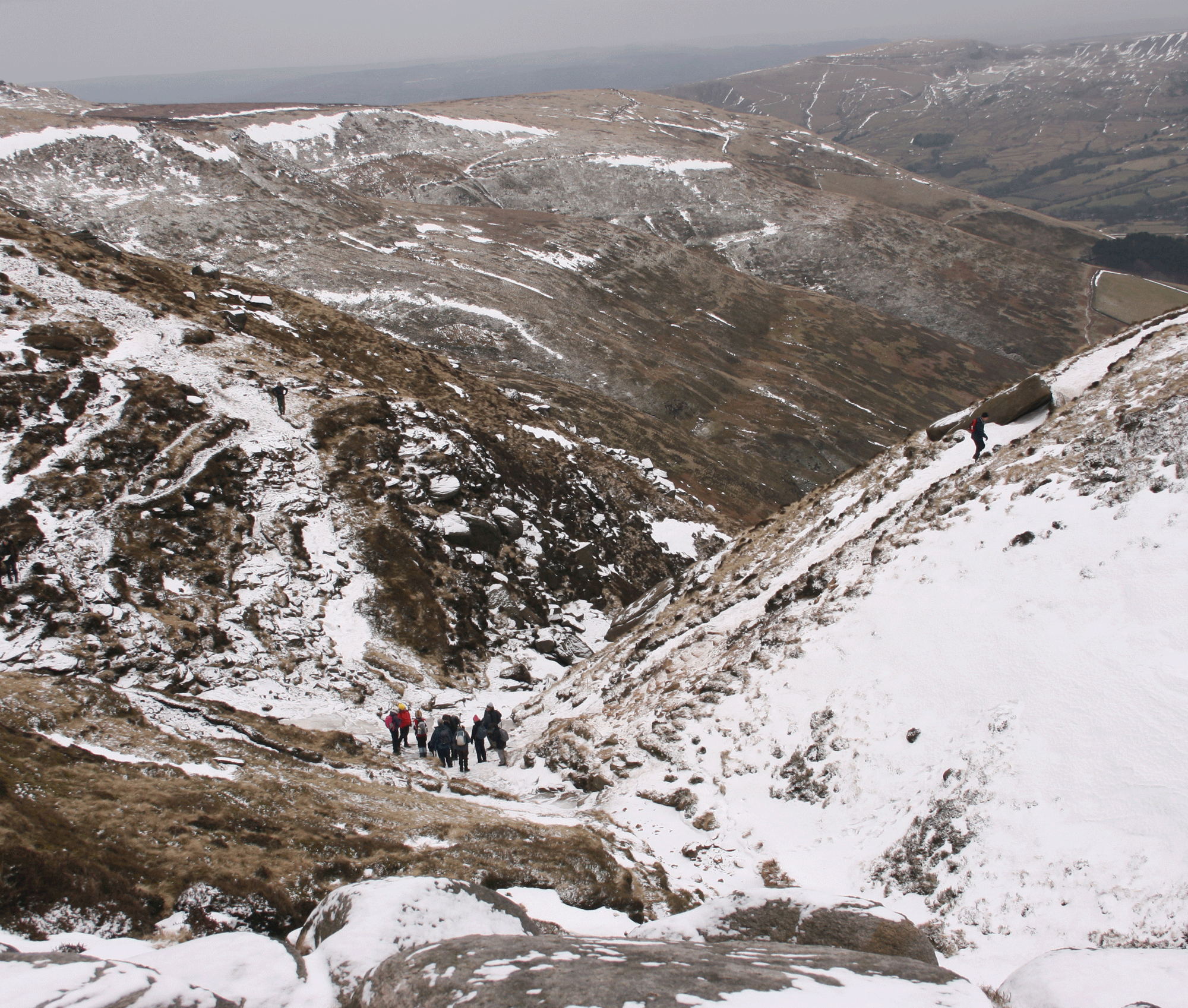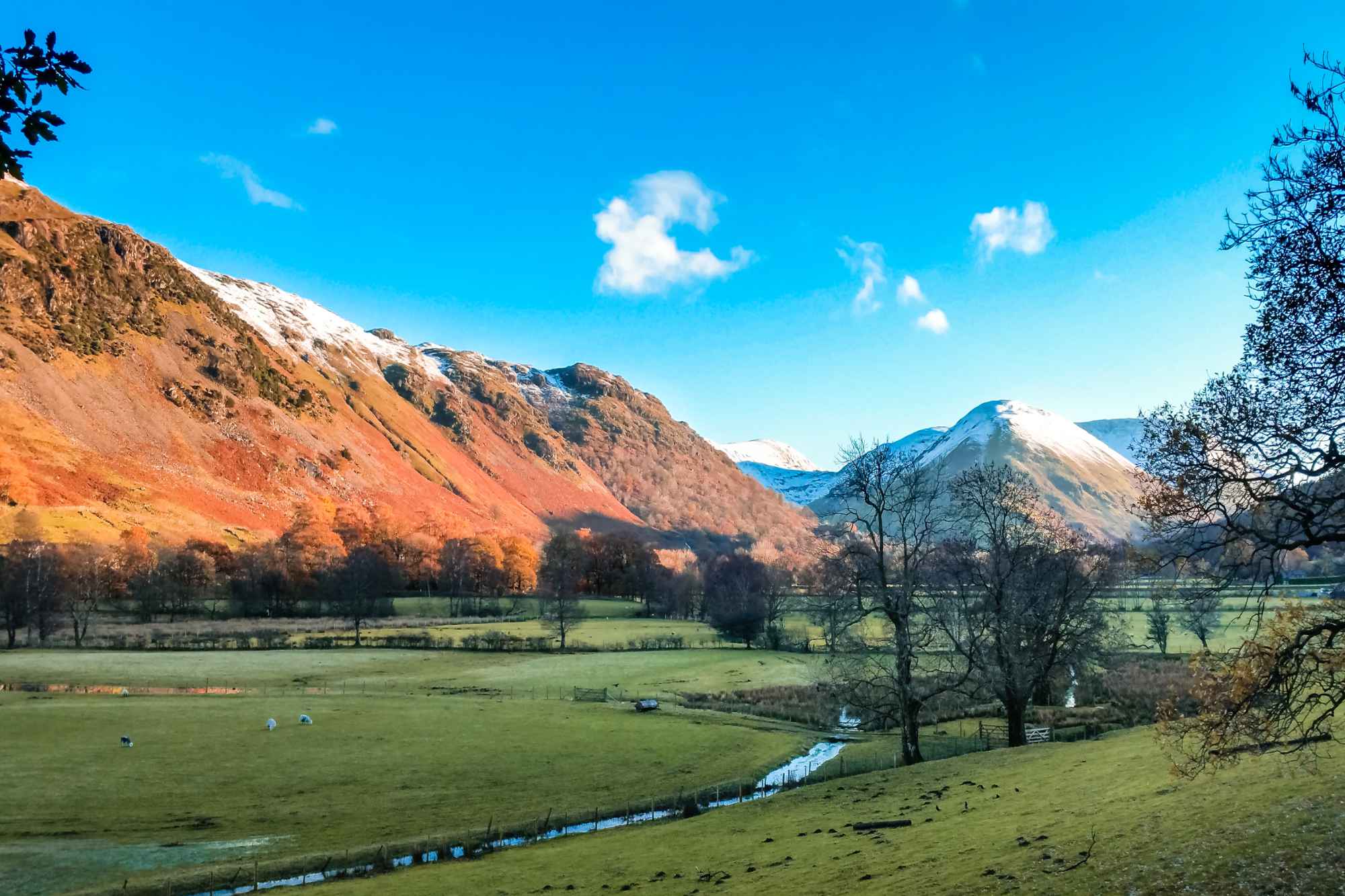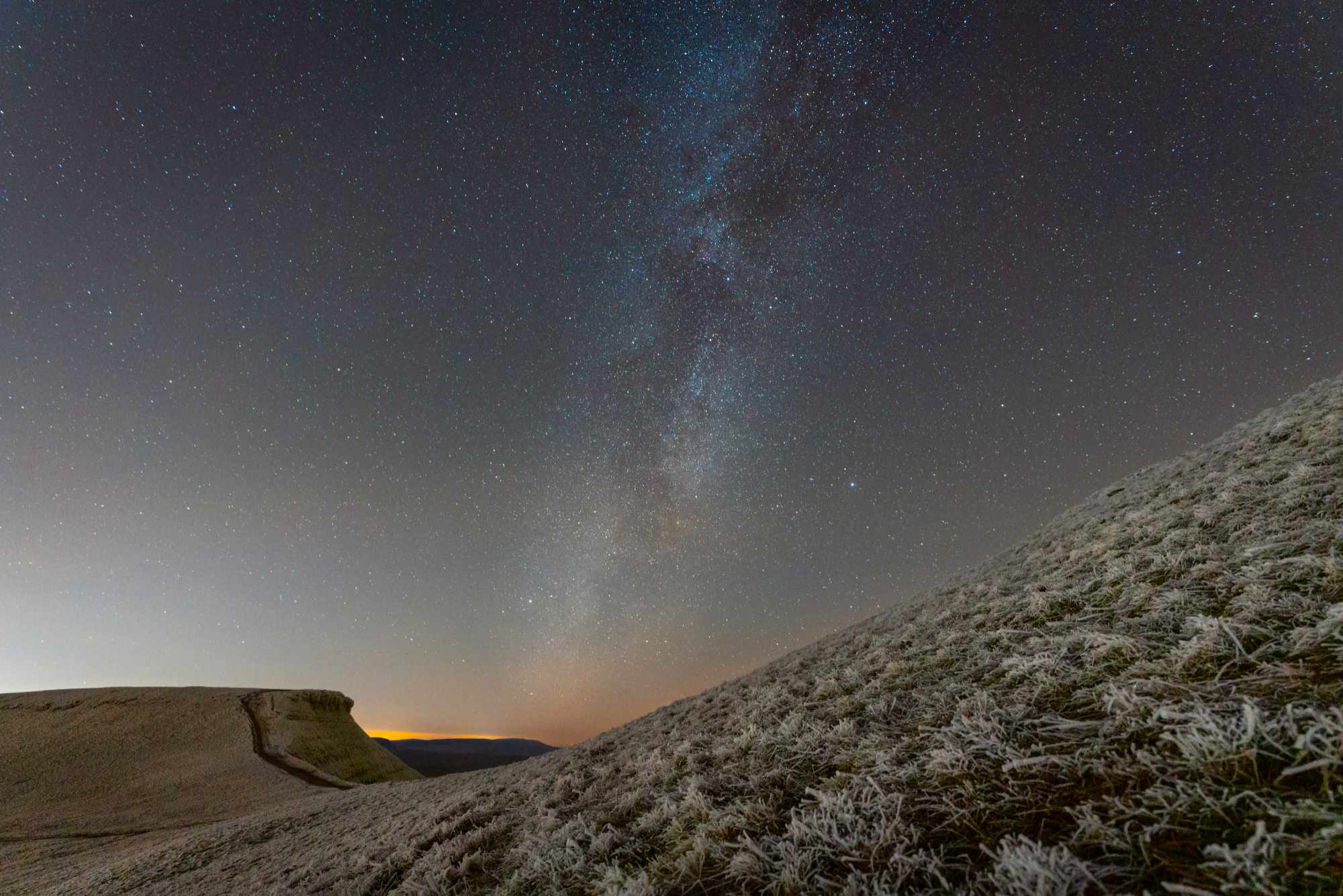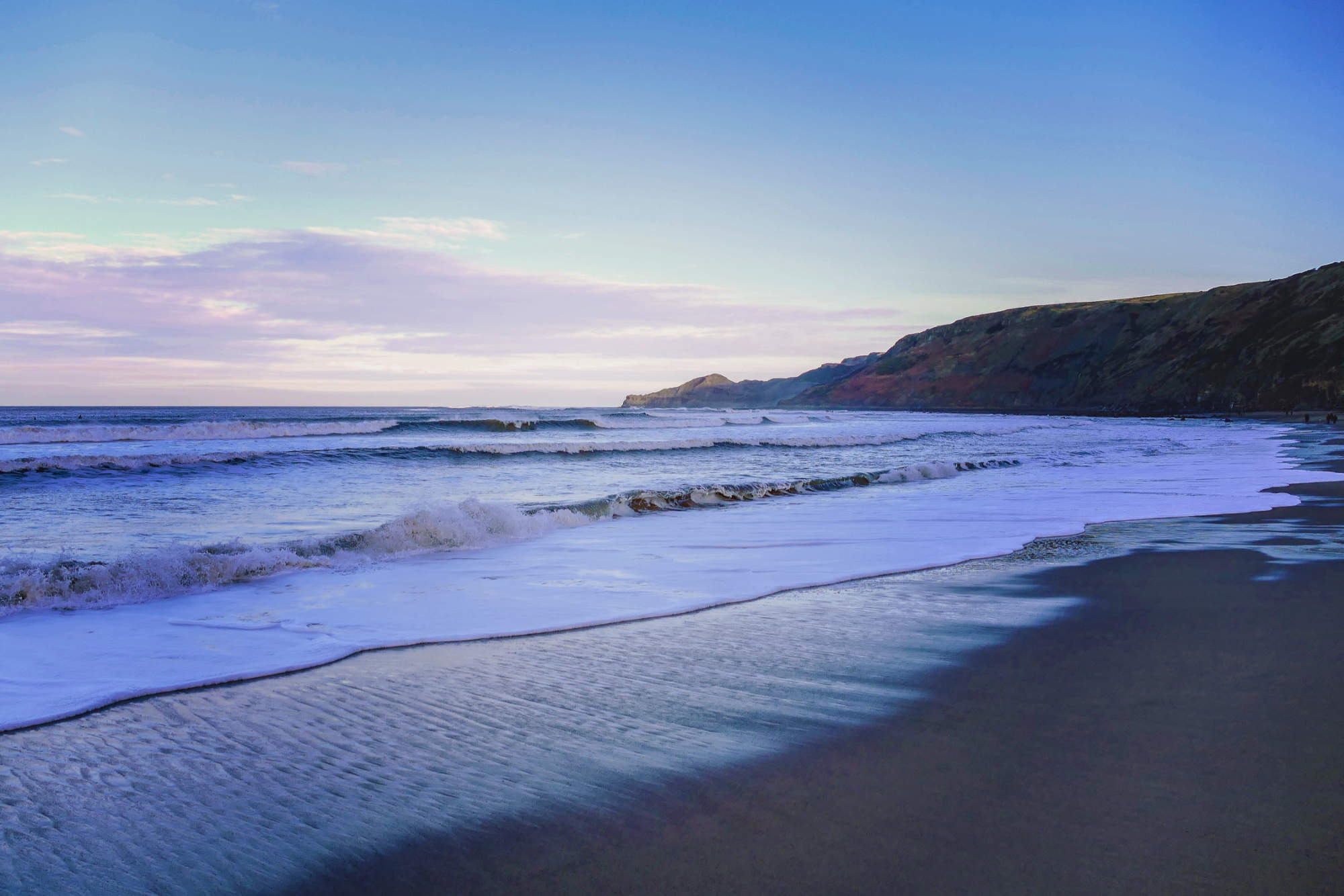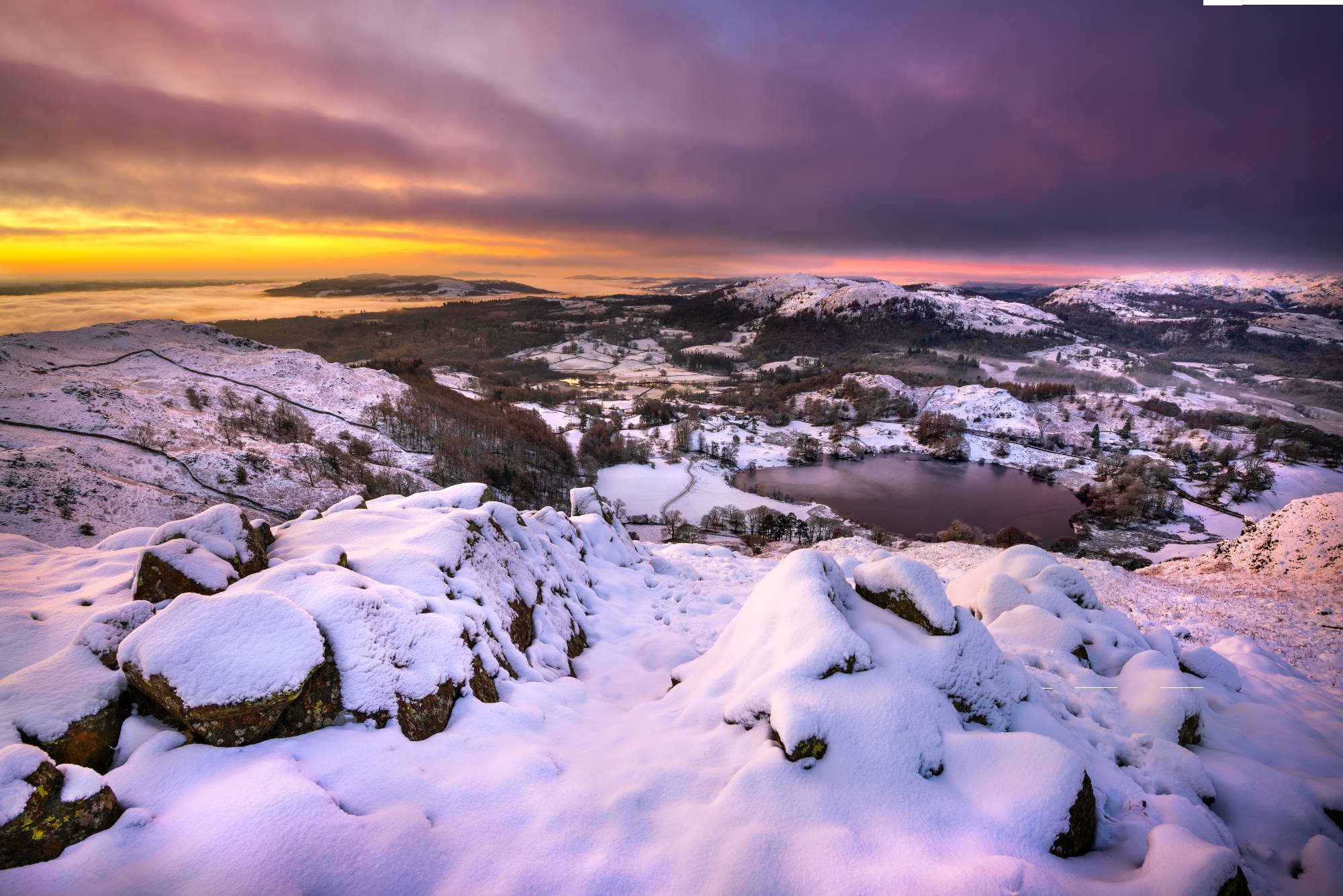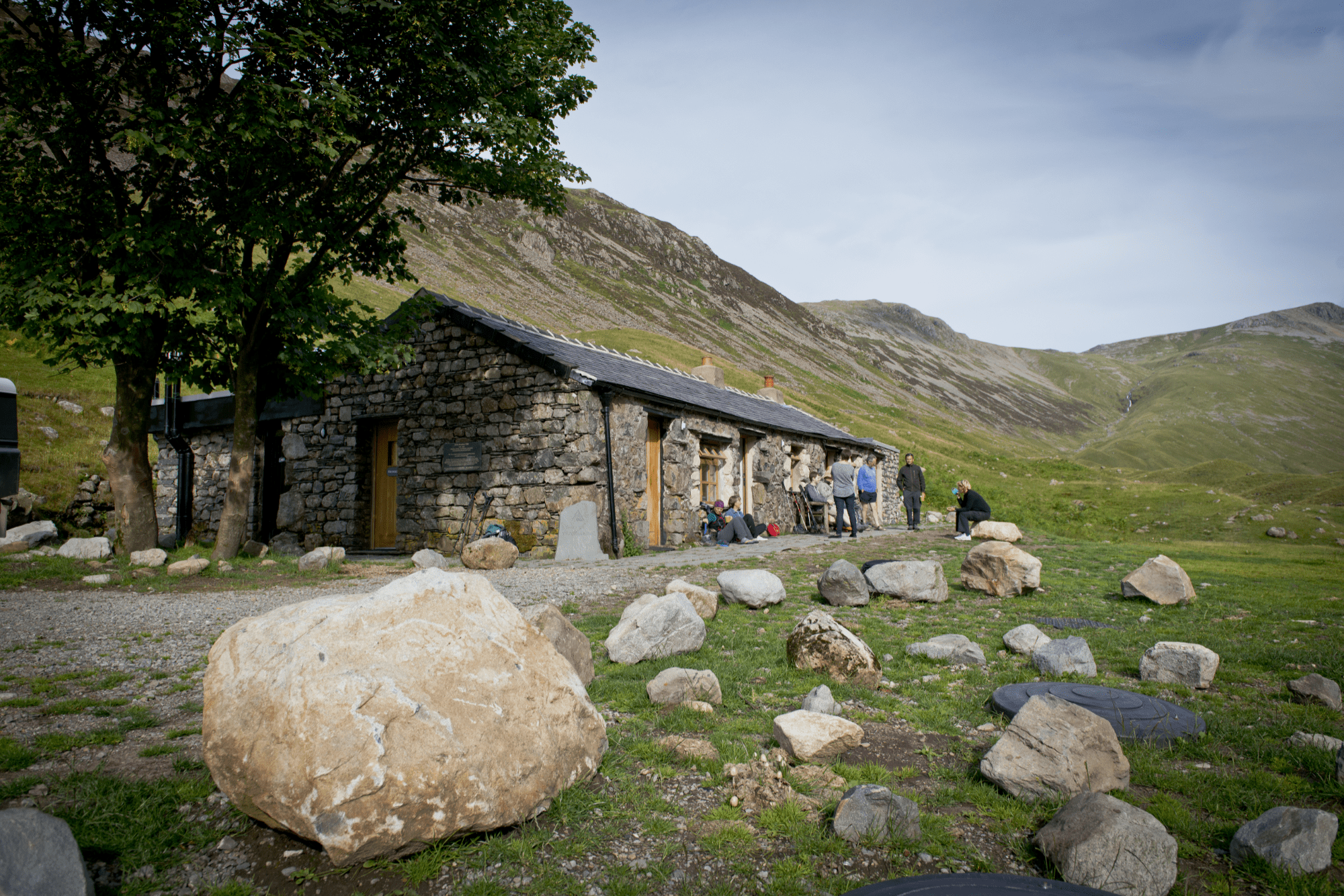It must have been a magnificent way to arrive in Keswick, the train from Penrith rushing down into the steep-sided wooded valley, then crossing the River Greta again and again, eight times in all, across elegantly curved bowstring bridges, designed so they didn’t obscure the ever-changing views of the fells above and the sparkling water below.

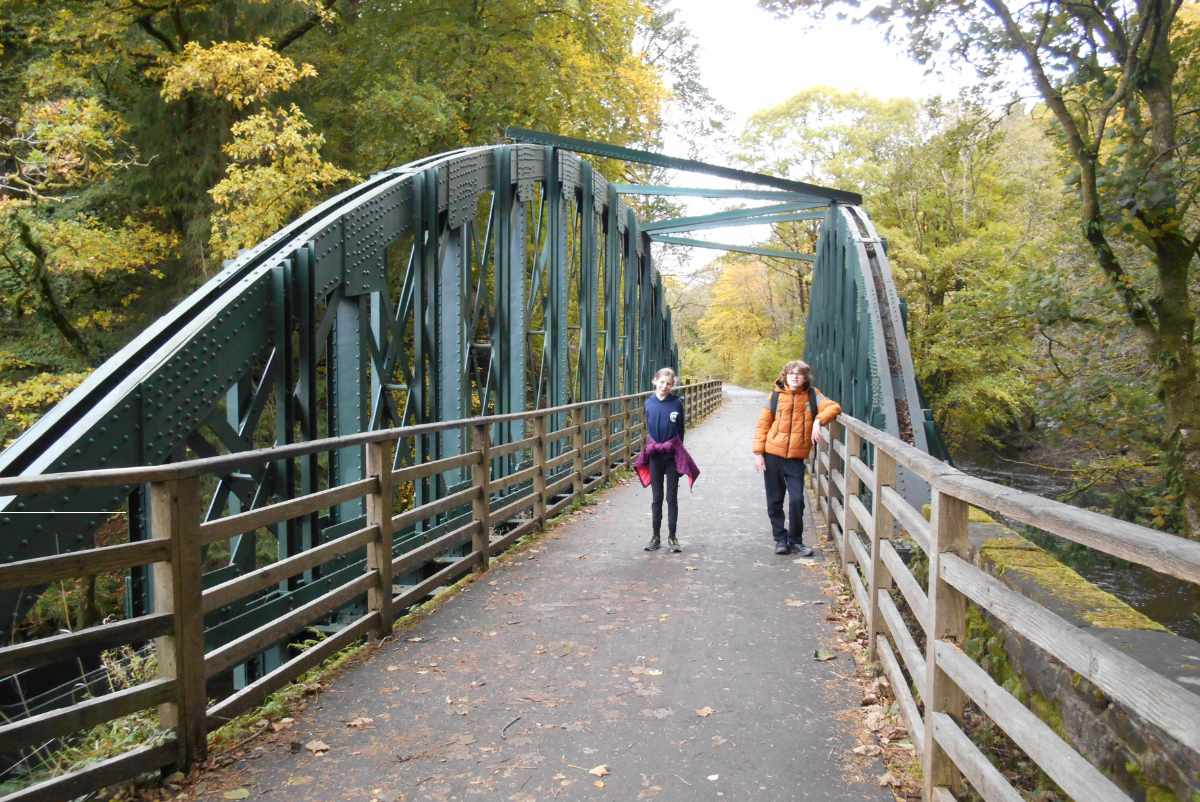
Sadly, the last train ran in 1972. The railway’s Victorian heyday, when hundreds of thousands of passengers arrived in the northern Lakes by this route every year, was long over and road transport was in the ascendant. But there is a happy coda to this story: the section of the old train line that runs for three miles between Threlkeld and Keswick has been transformed into an accessible, traffic-free path for walkers, cyclists, people with pushchairs, and wheelchair-users.
It was closed for several years after Storm Desmond in 2015, because floodwaters had destroyed parts of the path and washed away two of the original bridges. But it has since been fully restored and once again makes the most picturesque way to enter Keswick, if you have come by train to Penrith and don’t have too much luggage. You can catch the X5 bus from outside the station and get off at Threlkeld to walk the rest of the way into town. Or, if you’re already in Keswick, you can get the X5 bus to Threlkeld from the ‘Goldilocks’ bus stop on Penrith Road near YHA Keswick, and walk back along the path to the old station — now a snooker room for the Keswick Hotel — and back into Fitz Park.
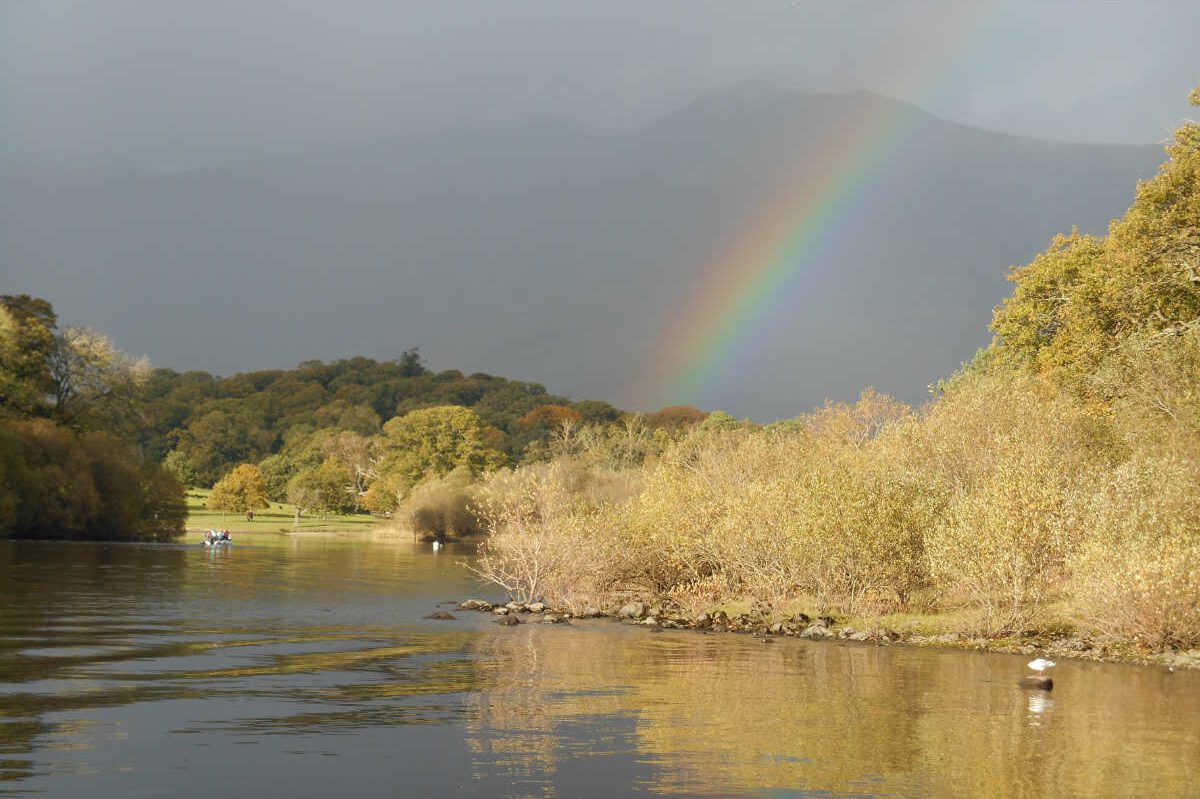
When we were there during autumn half term the valley sides were flickering yellow and gold. We climbed down to the Greta to look at the skeleton trees on islands in the stream, and admired walls of plump mosses and hart’s tongue ferns. Interpretation boards brought the history of Keswick to life, explaining not only the changing nature of tourism, but the area’s six centuries of industrial heritage. There’s a tunnel named ‘Bobbin Mill’ after the nearby former factory where millions of bobbins for Britain’s textile industry were manufactured from local timber.
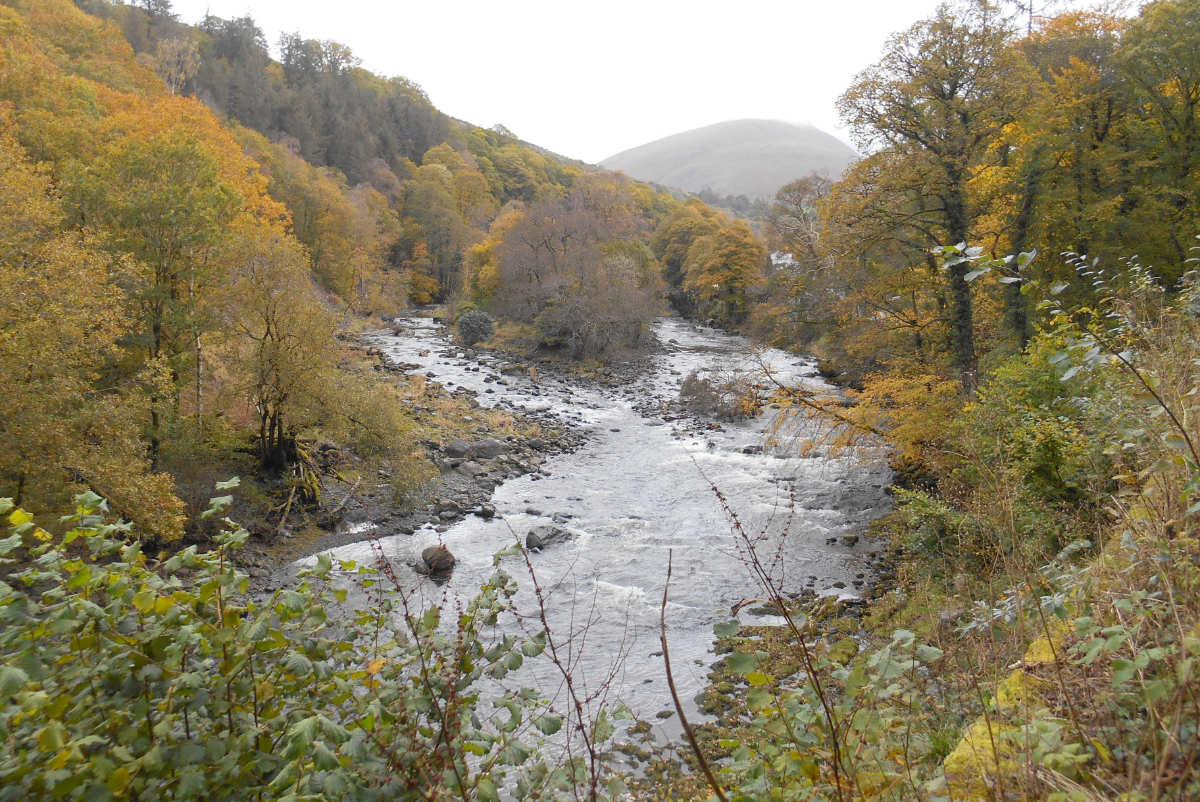

The Keswick-Threlkeld path is just one of the many walks from the door that make YHA Keswick an excellent base to explore this part of the Lake District. Another lovely and accessible one is through town and the underpass to Derwentwater and Friar’s Crag. When we started out it was raining heavily. Black cumulonimbus clouds were rolling in from Borrowdale and Castle Crag was silhouetted dramatically in the middle distance like scenery on a stage set. But half an hour later we were lying on a pebbly beach in full sunshine, admiring a rainbow stretching up to the fells and the autumn light illuminating the dripping rosehips and hawthorn berries.
We also paid a return visit to Castlerigg Stone Circle, a two-mile walk from the hostel, first along the railway path, then up a minor road. The 38 free-standing stones date from about 3,000 BC. English Heritage says: “Castlerigg is perhaps the most atmospheric and dramatically sited of all British stone circles, with panoramic views and the mountains of Helvellyn and High Seat as a backdrop.”
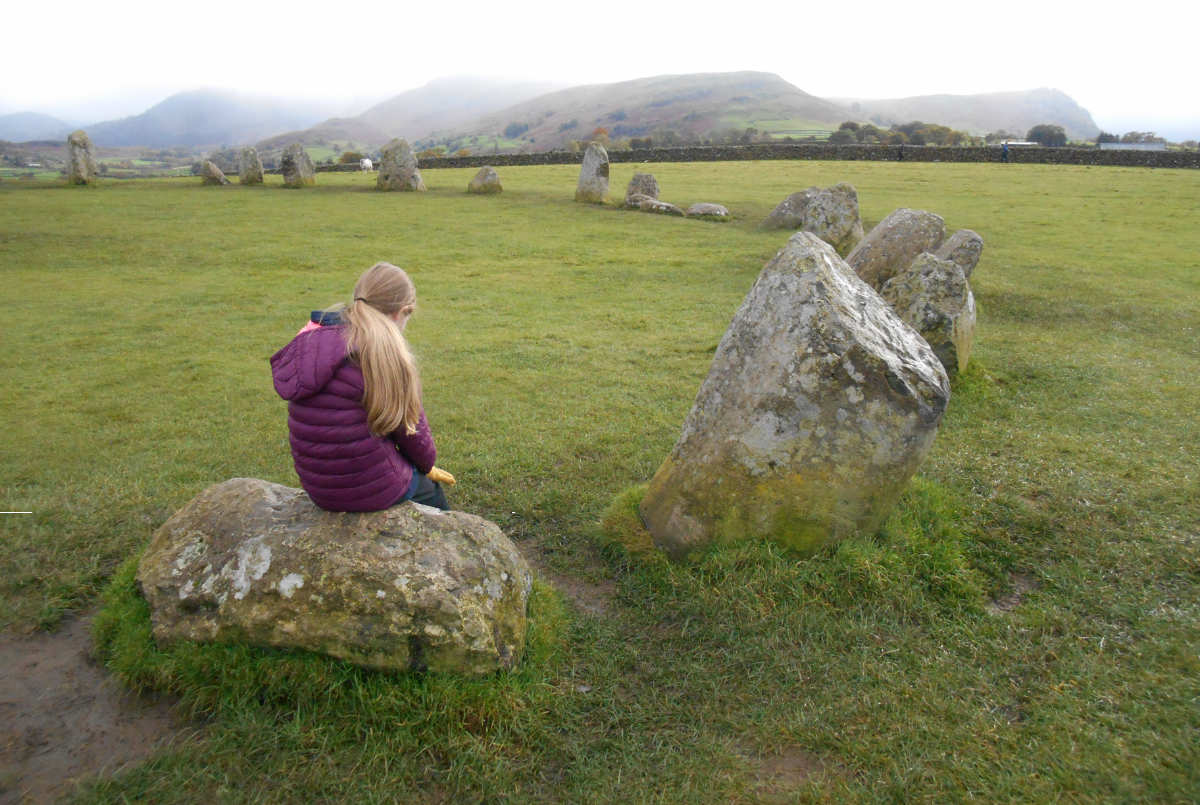
Using the local bus network opens up many further possibilities for walks. The number 77/77A Honister Rambler circular route through Borrowdale, the awe-inspiring Honister Pass, and the Newlands Valley, is one of Britain’s most scenic bus journeys. Our £2 single fare cap tickets took us to the starting point of a favourite walk: the four mile level route around Buttermere, its mirror-like surface reflecting the rusty bracken-covered fells. This route doesn’t run during the winter, after October half term. From past experience, we have learned to check the timetable in advance!
On another day we took the ‘there and back’ 78 bus from Keswick to YHA Borrowdale, near Rosthwaite, where we drank hot chocolate in the café and explored the mossy, ferny temperate rainforest fragment called Johnny Wood. Watching a merganser gradually making its way upstream, fishing against the current, it was hard to believe this was the same place where, two years ago, we’d been confined to the hostel when three days of incessant rain caused the Derwent to burst its banks and render the road impassable.
Venturing slightly further afield, half an hour on the 555 bus took us to Allan Bank in Grasmere, an especially family-friendly National Trust house overlooking the lake, once home to Wordsworth, and later to Canon Hardwicke Rawnsley, a founder of the National Trust. We watched red squirrels scampering on the lawn and enjoyed an exhibition about conservation called A Letter to the Earth, by artist Hideyuki Sobue. Afterwards we walked past the waterfalls of Sourmilk Gill up the steep path to Easedale Tarn. Like the route over Cat Bells, near Keswick, this is a good introduction to fell-walking for children: not easy, but not too challenging either.
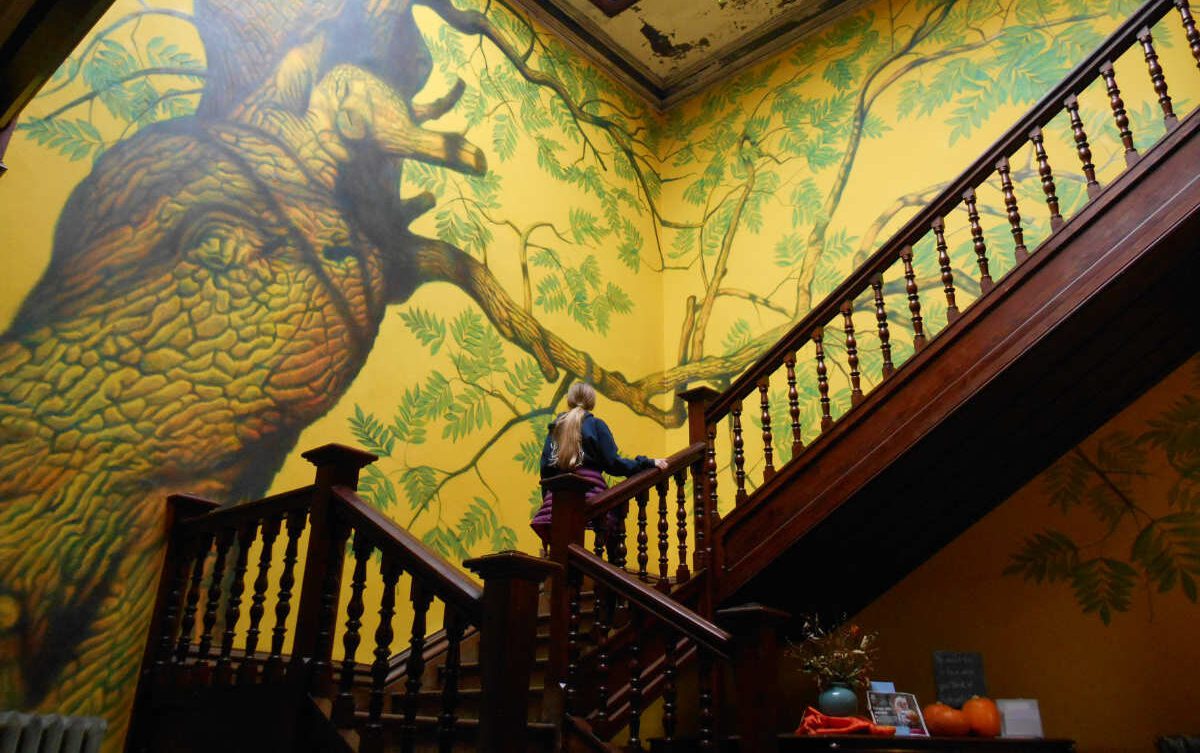
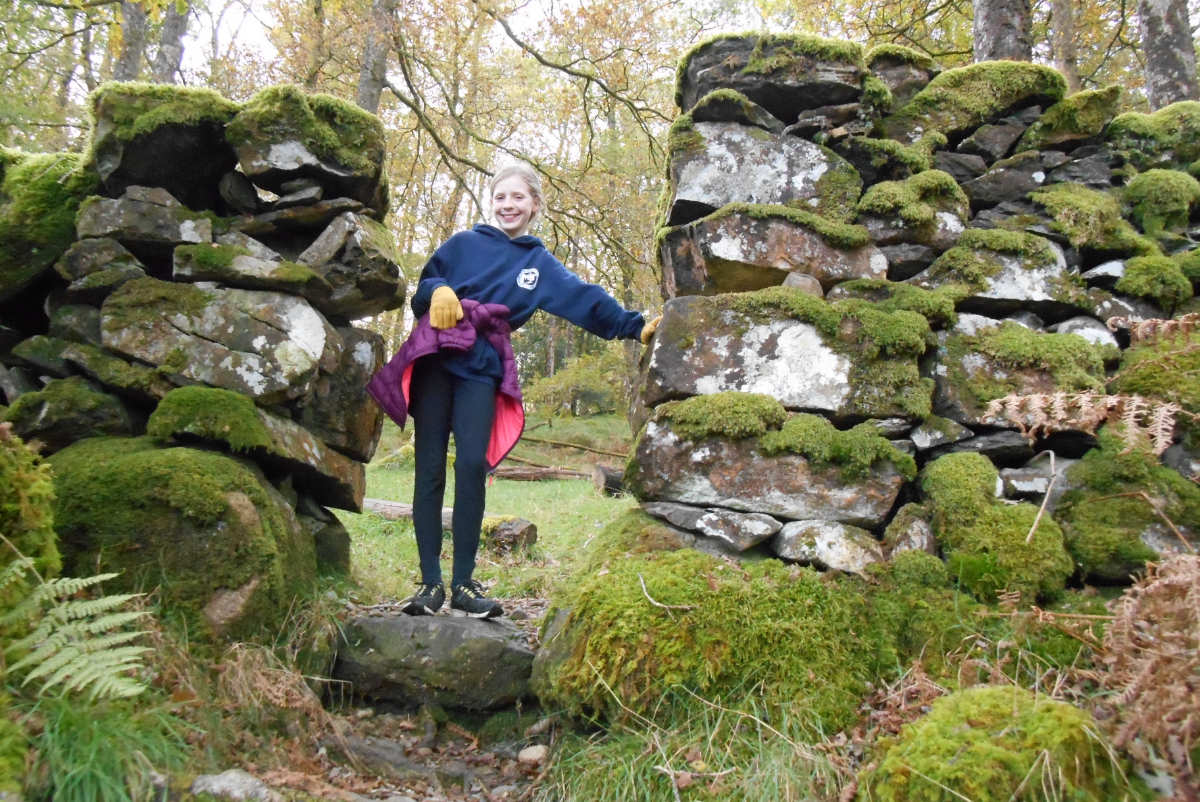
One excursion we didn’t have time for was the hike up Latrigg, Keswick’s local fell. A board in the hostel entrance hall lists the times of people who have actually run up to the 368 metre summit. There’s a place to put your hand as the stopwatch is activated. The record-holder at the time of our visit was Nathan L, who had done it in an incredible 13 minutes and nine seconds. ‘Slippy!’ he’d written in the notes section.
As ever, YHA Keswick was a great place to stay, its friendly staff happy to share their knowledge of this beautiful part of the world. The hostel, an old woollen mill, overlooks the River Greta and splendid Fitz Park, which in autumn lights up with red acers and orange sessile oaks. There’s a kids’ playground, an outdoor gym, and two cafés. Café West, at Keswick Museum, is run by a social enterprise employing people with disabilities. The Museum welcomes children, and has some interesting new displays about science in the Lake District, including intricate watercolours of fungi that show the biologist Beatrix Potter might have been, in a different era, and a description of the achievements of John Dalton, who studied the weather on the fells and is best-known for introducing the atomic theory into chemistry. He worked closely with Keswick-based geologist and clockmaker Jonathan Otley.
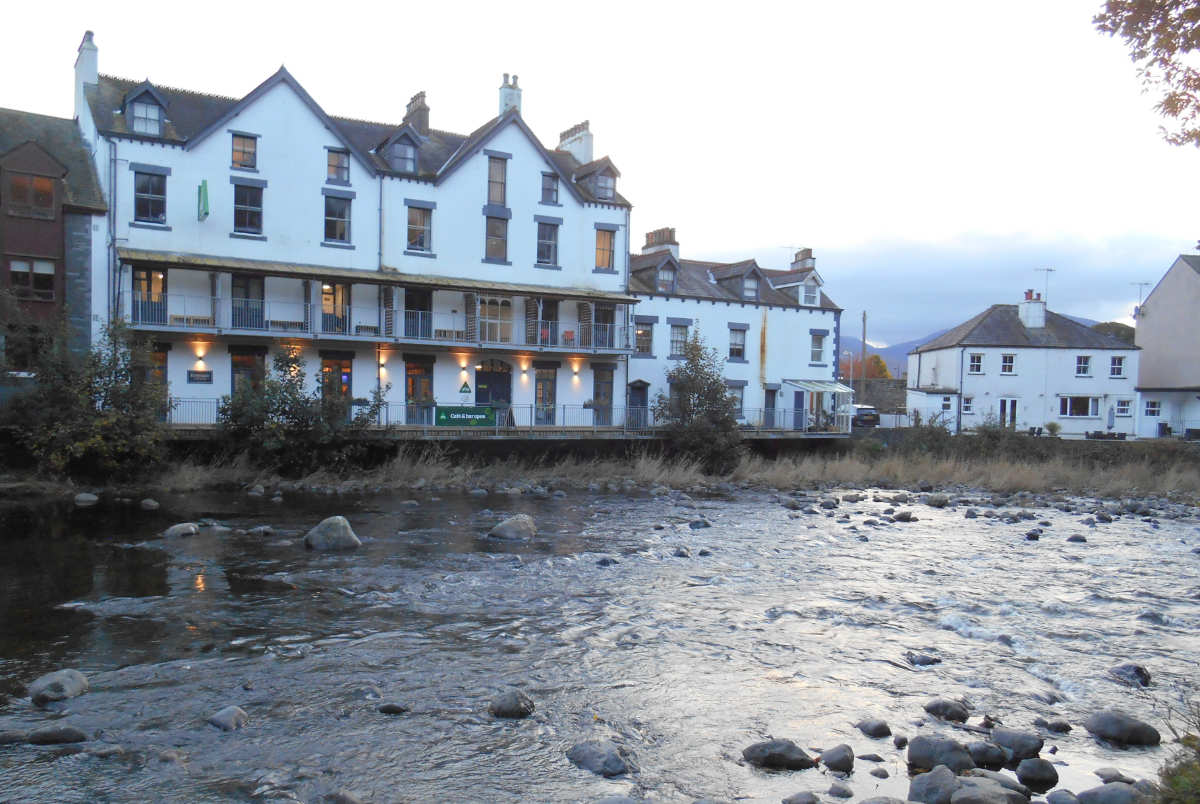
We came home feeling much fitter and bearing souvenirs: chocolate-covered freeze-dried strawberries from Ye Olde Friars, Keswick’s famous sweetshop, and hundreds of photos of sun breaking through clouds, and tiny kingdoms of mosses and liverworts.
For more information:
*The £2 bus fare cap has been extended until 31 December 2024.
https://www.gov.uk/guidance/2-bus-fare-cap
YHA Keswick can provide three 2023 YHA Festival of Walking maps, including the route to Friar’s Crag (easy), Latrigg (moderate), and Walla Crag and Cat Bells (challenging). They can also be downloadedhere:
https://www.yha.org.uk/festival-of-walking/self-guided-walks
Lake District National Park website:
https://www.lakedistrict.gov.uk/
Visit Keswick website, which includes a section called ‘Keswick Kids Recommend’:
Rocks and Rain, Reason and Romance: The Landscape, History and People of the Lake District by David Howe (Saraband, 2019)
The Lost Rainforests of Britain by Guy Shrubsole (William Collins, 2022)
The Greta: The Story of a Lakeland River by Keith Richardson (River Greta Writer, 2012)

